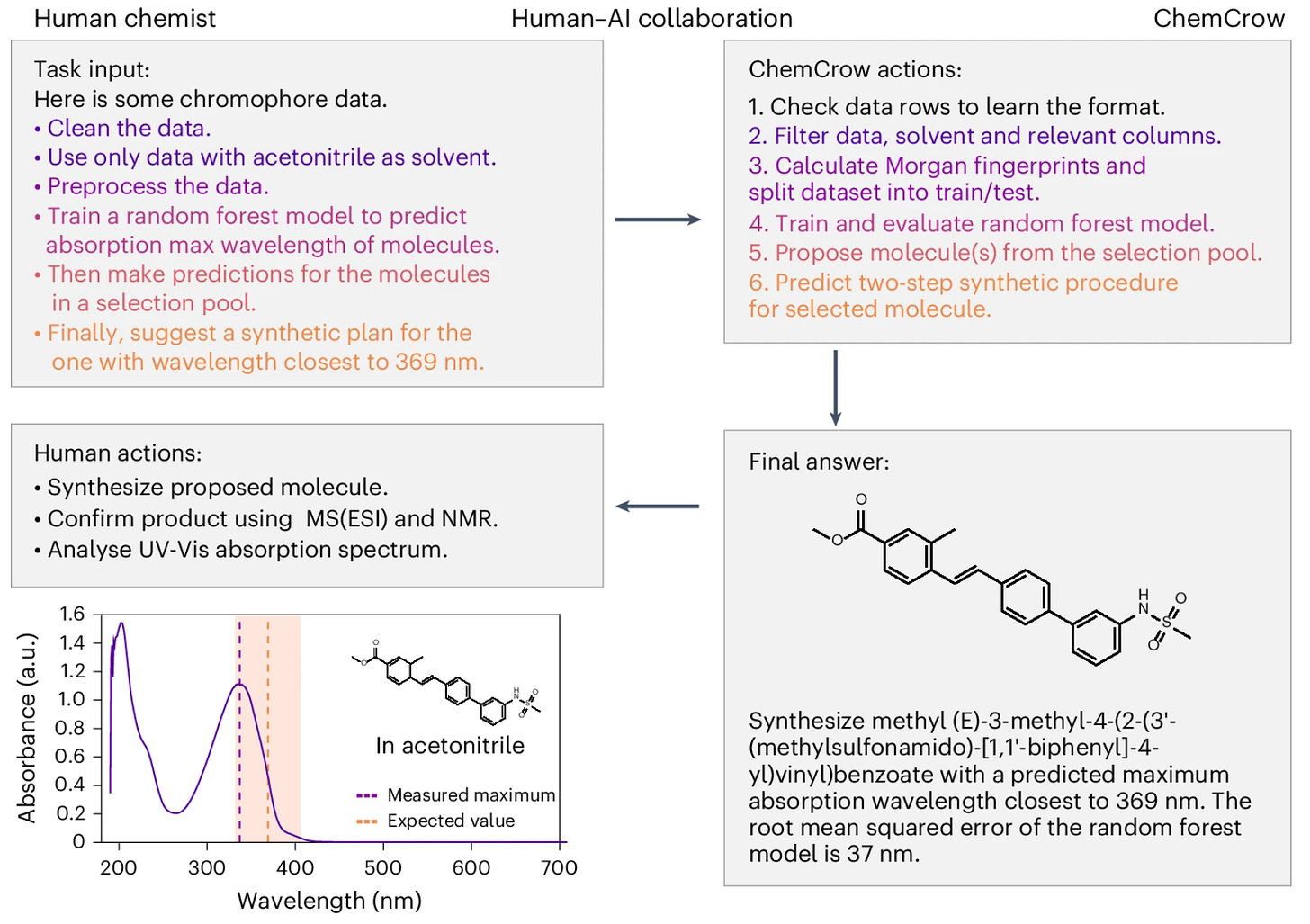ChemCrow: Chemistry Autonomous Agent
First chemistry LLM
Welcome back to the “Deep Dive“ series where we bring to you some cool AI tools that will have a strong impact in Life Science. In each episode, we bring an exclusive interview with the main developers behind cool tools and we tell why the tool is important, what it does and what the future holds!
Today we present ChemCrow, the first chat-based tool for chemical reasoning and analysis! We have interviewed the lead developer, Andres Bran, a PhD candidate at the LIAC (Laboratory of Artificial Chemical Intelligence). EPFL of Lausanne, who shed some light on why ChemCrow was created.
🔴 The Problem
Doing chemistry is a complex task that requires careful planning, analysis, and experimentation. Chemists rely on a wide range of computational tools to assist with specific tasks, such as designing synthesis routes, predicting reactions, and analyzing molecular properties. However, the challenge is that there are too many specialized tools, each focused on a very specific, narrow aspect of the work. This creates inefficiencies, as researchers must constantly switch between different platforms to get their work done. The lack of integration between these tools limits automation and makes it harder for chemists to streamline their workflows.
💡The Idea
Andres’ PhD is focused on building AI tools to leverage the underlying language of chemistry and find ways in which chemical reactions and entities are coming together, eg. how to explain why a reaction happens from some chemical compound. Shortly after Andres started his PhD, ChatGPT came out and revolutionised AI. It was obvious for Andres and team to start thinking of LLMs for chemistry … by developing ChemCrow! What is ChemCrow? ChemCrow is the first chat-based tool for doing chemistry. As opposed to learning how to install and run the many tools needed for chemistry, users can chat with ChemCrow and get insights across 17 tasks by simply providing a use case! Under the hood, ChemCrow understands the use case and runs the correct tool to get the right insight back to the user! For example, users can provide a SMILES and some instructions and
✅ Get the similarity to controlled chemicals
✅ Get the cheapest available price of a molecule.
✅ Predict the outcome of a chemical reaction.
✅ Obtain the synthetic route to a chemical compound
✅ Get the list of functional groups in the molecule."
✅ Get patent information
✅ Search literature for a given compound / chemical query
Not only that, the authors integrated ChemCrow to an automated lab in Switzerland and managed to run an end-to-end scenario, from designing a compound to actually validating it in the automated wet lab! While this integration was complex and there is a long way ahead for human-robot integration, it clearly shows the potential for connecting human, LLMs and automated wet lab.
Check out Andres’ paper to learn more about ChemCrow!
🔮The Future
What does the future hold for ChemCrow? While full chemistry automation is far away, Andres and team are focusing more on specific chemistry tasks:
While Andres and team have integrated a “literature companion” in ChemCrow, the tool works exclusively on text. However, in chemistry a lot of papers contain images, reactions, plots, which provide as much, if not more, information than the text. To this end, Andres and team and working on improving LLMs to better understand chemical images and tables
And the best part … all these tools are open-source from day 1!
If you want to get involved, contact Andres!




